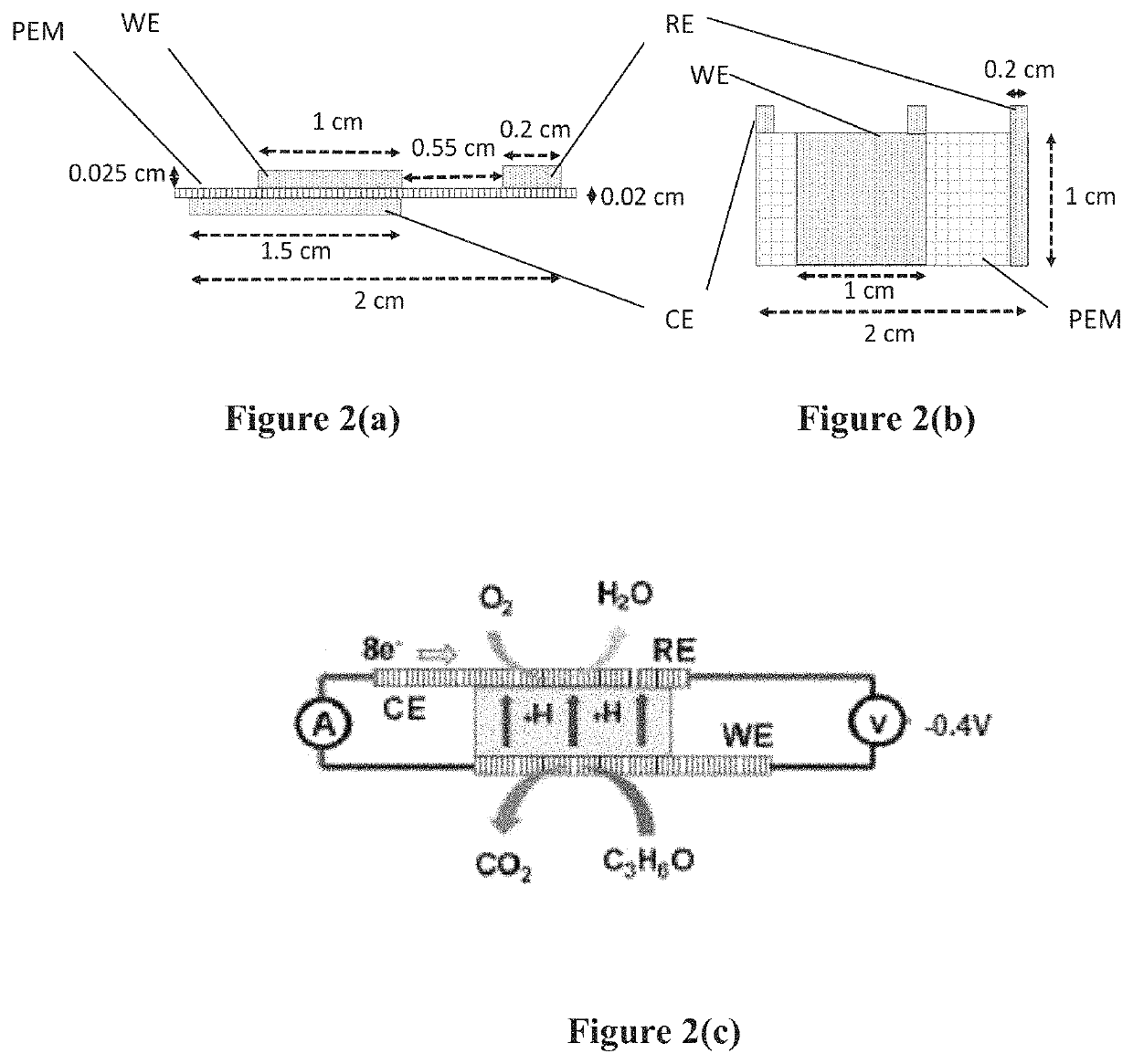Sensor for detection of acetone
a technology of acetone and detection device, which is applied in the field of acetone detection sensor, can solve the problems of false reading, significant overlap of calibration fittings, and inability to ensure the reliability of multivariable environment measurement in real life, so as to reduce redundancy and dimensionality of data sets and improve calibration precision
- Summary
- Abstract
- Description
- Claims
- Application Information
AI Technical Summary
Benefits of technology
Problems solved by technology
Method used
Image
Examples
example 1
Materials and Methods
Chemicals and Apparatus
[0044]For the electrode materials of a three electrode fuel cell, the following were used: nickel 400 (monel) was used for the working electrode (WE) and counter electrode (CE), and platinum-clad (Pt-clad) niobium was used for the reference electrode (RE). A noncorrosive monel sheet with a thickness of 0.05 cm was purchased from M. Vincent and Associates Ltd. and nonwoven Pt-clad niobium mesh was purchased from Technic Inc. Perforation and laser cutting of the WE and CE (monel sheet) were performed at SBC industries in Miami. Nafion115 (thickness of 0.0127 cm) from Ion Power was used for the proton exchange membrane (PEM). Sulfuric acid (95%), acetone (95.27%), isopropanol (IPA, 95.27%), and hydrogen peroxide (H2O2) were purchased from Sigma-Aldrich, Fisher Scientific Inc., and Alfa Aesar, respectively. The aqueous solutions were prepared with de-ionized (DI) water.
[0045]A vacuum oven (Model 280A) was purchased from Fisher Scientific. A hy...
example 2
Platform for Acetone Sensing
[0062]A comprehensive wearable platform with a miniaturized potentiostat was developed for a sustainable solution for acetone detection. A customized printed circuit board (PCB) was designed to accommodate the low cost potentiostat (LMP91000) with a low power data processing microcontroller (nRF51822) and Bluetooth (RN-42) for the data transmission. The device uses nRF51822 from Nordic semiconductor as an integrated wireless microcontroller with Bluetooth low energy (BLE) capabilities to provide wireless communication and peripheral controls. The working mechanism of LMP91000 is known.
[0063]The device begins amperometric operation when it detects a voltage less than −0.05 V across the sensor electrodes (RE and WE). The amperometric current detected corresponds to the concentration of acetone, which can be determined through calibration. The current from LMP91000 is converted to a potential and fed to the internal analog-to-digital converter (ADC) of the w...
example 3
[0065]Specific detection can be achieved with the help of a sensor fusion concept, where three different sensors are fabricated into a single platform, as shown in FIG. 1, along with algorithms to autonomously analyze and evaluate the signals. Such a sensor platform was fabricated using a silicon wafer, and all three miniaturized structures (micro-fuel cell, humidity sensor, and thermocouple) were contained within a 9×9 mm dimension. Among these miniaturized structures, the thermocouple was constructed with two metals, chromium (Cr) and aluminum (Al) with the overall dimension being 2×1.6 mm. As shown in FIG. 1d, one side of the thermocouple was made by Cr and the other side was by Al, and they overlap each other at the terminals, forming a ‘U’ shape structure. Both the micro-fuel cell and humidity sensors were interdigitated electrodes made of gold with a dimension 78 mm2 and 2×1.6 mm, respectively (FIG. 1). The gaps between the interdigitated electrodes of the micro-fuel cell were...
PUM
| Property | Measurement | Unit |
|---|---|---|
| surface area | aaaaa | aaaaa |
| surface area | aaaaa | aaaaa |
| width | aaaaa | aaaaa |
Abstract
Description
Claims
Application Information
 Login to View More
Login to View More - R&D
- Intellectual Property
- Life Sciences
- Materials
- Tech Scout
- Unparalleled Data Quality
- Higher Quality Content
- 60% Fewer Hallucinations
Browse by: Latest US Patents, China's latest patents, Technical Efficacy Thesaurus, Application Domain, Technology Topic, Popular Technical Reports.
© 2025 PatSnap. All rights reserved.Legal|Privacy policy|Modern Slavery Act Transparency Statement|Sitemap|About US| Contact US: help@patsnap.com



